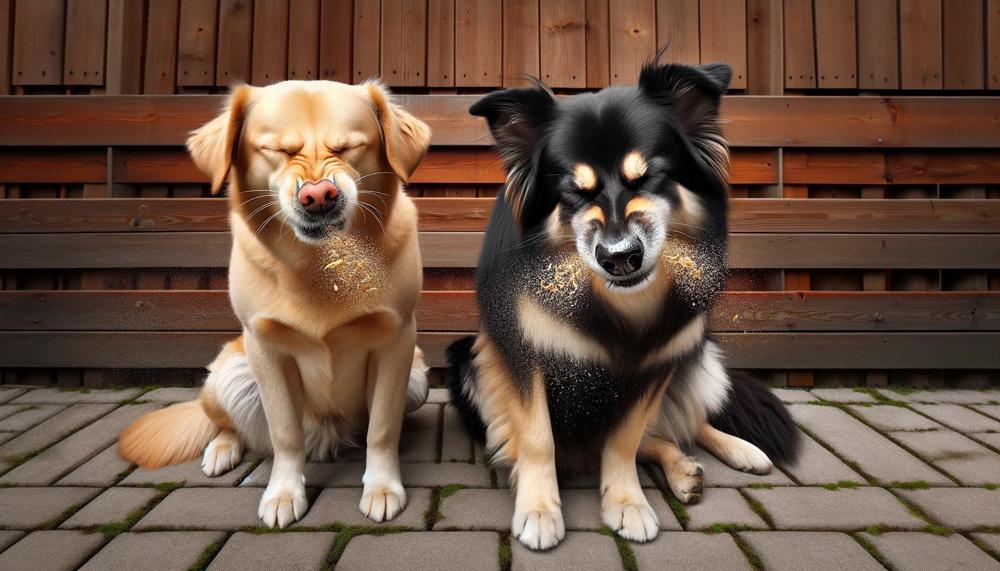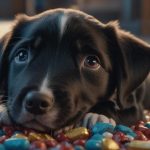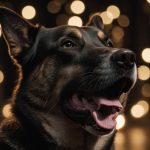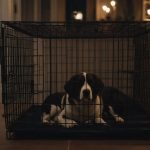As a devoted dog owner, you’ve probably seen your furry companion suddenly start making strange snorting noises and gasping for air. It’s called reverse sneezing, and it can be quite alarming to witness. But before you rush to the vet in a panic, take a deep breath (unlike your pup) and read on to learn more about this common behavior.
In this blog post, we’ll delve into the fascinating world of reverse sneezing in dogs. We’ll explore the reasons behind why they do it, who is most likely to experience it, and what you can do to help ease their discomfort.
So grab a treat for your four-legged friend and get ready to become an expert on all things reverse sneezing.
Here are some key takeaways that you can expect from this post:
- Reverse sneezing is a reflex action that helps dogs clear their nasal passages.
- It’s often triggered by irritation or inflammation in the nose.
- Small breeds, brachycephalic (flat-faced) breeds, and older dogs are more prone to reverse sneezing.
- Environmental allergens, excitement, and eating too quickly can also trigger episodes of reverse sneezing.
- While it may look scary, reverse sneezing is usually not a cause for concern and will subside on its own.
- However, if your dog experiences frequent or prolonged episodes of reverse sneezing, it’s best to consult with your veterinarian for further evaluation.
So let’s dig deeper into this curious behavior and learn more about why our beloved pups do the things they do.
Why Do Dogs Reverse Sneeze?
Table of Contents
Reverse sneezing (RS) is a reflex that dogs use to remove irritants from their upper respiratory tract. It’s a loud snorting sound that can last 30 seconds to a minute.
The exact cause of a reverse sneeze is unknown, but it’s believed to be caused by inflammation or irritation of the nasal, pharyngeal, or sinus passages. Irritants include:
- Dust
- Smells from air fresheners, perfume, or smoke
- Pollen allergies
- Nasal mites
- Foreign bodies such as seeds, pollens, grasses, allergies, smoke, odors, masses, or an elongated soft palate
- Excitement
The Anatomy of a Dog’s Nose and Throat
The nose and throat of a canine are vital components of their respiratory system and can cause bouts of reverse sneezing if any abnormalities or complications are present.
These structures include the nasal cavity, pharynx, larynx, and trachea, which can become inflamed or irritated due to various factors such as allergens, infections, or blockages.
It is essential for pet owners to comprehend the anatomy of their dog’s nose and throat to better identify potential triggers for reverse sneezing and ensure their beloved pet’s health and well-being.
| Nose | Throat |
| – Two nostrils | – Pharynx |
| – Nasal cavity | – Larynx |
| – Cilia (tiny hairs) | – Trachea |
Some possible causes of reverse sneezing related to these structures are:
- Irritants in the nasal cavity: Dust, pollen, or other particles can trigger the reflex of reverse sneezing as the dog tries to forcefully expel them by rapidly inhaling through its nose.
- Allergies: Allergies can cause inflammation in the nasal cavity or throat, leading to irritation and reverse sneezing.
- Infections: Respiratory infections can cause inflammation in the pharynx and larynx, triggering bouts of reverse sneezing.
- Obstructions: If a dog swallows something too quickly or gets food stuck in its throat, it can cause reverse sneezing as a way to clear the obstruction.
Understanding the anatomy of a dog’s nose and throat can help pet owners identify potential triggers for reverse sneezing and take necessary precautions to keep their furry companions healthy and comfortable. It is crucial to consult with a veterinarian if concerned about your dog’s reverse sneezing or any other respiratory issues.
Common Triggers for Reverse Sneezing
Reverse sneezing in dogs can be triggered by various factors, including allergies, foreign bodies or mites in the nose, irritants in the air, excitement, drainage of secretions, and infections or masses in the upper airway.
Each trigger can have a different effect on a dog’s respiratory system, as shown in the table below.
| Trigger | Description | Potential Effect on Respiratory System |
| Allergies | Allergies can cause inflammation and irritation in the nasal, pharyngeal, and sinus passages, which can lead to reverse sneezing. | Inflammation and irritation can trigger spasms in the throat and nasal passages, resulting in reverse sneezing. |
| Foreign bodies or mites in the nose | The presence of foreign objects or mites in the nose can cause discomfort and irritation, leading to reverse sneezing. | These foreign objects or mites can trigger an inflammatory response and spasms in the nasal passages, resulting in reverse sneezing. |
| Irritants in the air | Pollen, dust, smoke, or other irritants in the air can irritate a dog’s nasal passages and trigger bouts of reverse sneezing. | The irritation caused by these irritants can result in spasms in the throat and nasal passages, causing reverse sneezing. |
| Excitement | When a dog is excited, they may rapidly inhale and exhale air, which can lead to reverse sneezing. | Rapid breathing can cause spasms in the throat and nasal passages, resulting in reverse sneezing. |
| Drainage of secretions | Excessive mucus or drainage from the nose can cause reverse sneezing as the dog tries to clear their nasal passages. | The presence of excessive secretions can trigger spasms in the throat and nasal passages, resulting in reverse sneezing. |
| Infection or masses in the upper airway | Infections or masses in the upper airway can cause inflammation and irritation, leading to reverse sneezing. | Inflammation and irritation can result in spasms in the throat and nasal passages, causing reverse sneezing. |
It is important to keep in mind that not all dogs experience reverse sneezing, and some may have different triggers than others.
Breeds Prone to Reverse Sneezing
Breeds such as Pugs, English and French Bulldogs, Pekingese, Sharpei, Shi-tzu, Cavalier King Charles Spaniel, Boston Terrier, Chihuahuas, and Maltese are more susceptible to reverse sneezing due to their distinctive physical traits. These breeds have shorter and flatter noses, making them more vulnerable to nasal irritants and blockages.
Their narrow nasal passages also make it challenging for them to effectively clear their airways, resulting in episodes of reverse sneezing.
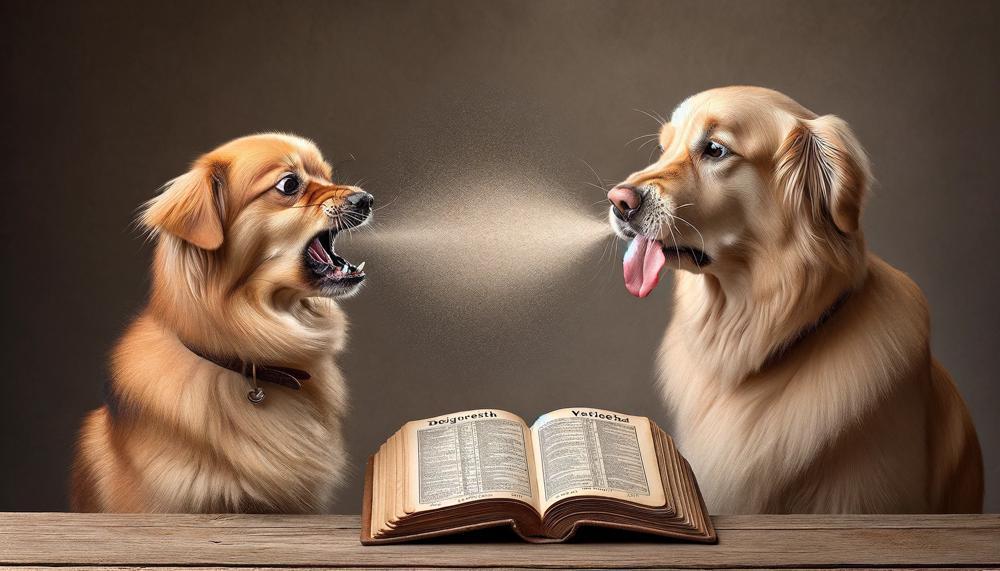
These breeds are known to have elongated soft palates and small tracheas, which can contribute to respiratory issues and make reverse sneezing more prevalent. Additionally, their smaller nostrils and respiratory tract make it easier for irritants and foreign objects to become trapped and trigger a reverse sneeze.
Furthermore, these breeds are prone to developing allergies, which can cause upper airway inflammation and lead to episodes of reverse sneezing. Allergies can be triggered by various factors such as pollen, dust, mold, or even certain foods.
Is Reverse Sneezing Harmful?
While reverse sneezing itself is not harmful to dogs, there are several potential risks and dangers associated with this condition. These include:
- Misdiagnosis: Reverse sneezing can sometimes be mistaken for other respiratory issues, such as collapsed trachea, allergies, or kennel cough. It is important to consult with a veterinarian to rule out any serious underlying conditions and properly diagnose the cause of reverse sneezing.
- Anxiety and stress: Reverse sneezing can also be triggered by anxiety, stress, or excitement in some dogs. This can be caused by various factors, such as new environments, loud noises, or changes in routine. If left unchecked, chronic stress and anxiety can lead to other health problems in dogs.
- Ingestion of foreign objects: Inhalation of foreign objects like grass, dust, or small particles can irritate a dog’s nasal passages and trigger a reverse sneeze reflex.
- Nasal infections: Reverse sneezing can sometimes be a symptom of underlying nasal infections or irritations caused by allergies or other respiratory illnesses. If your dog experiences frequent episodes of reverse sneezing, it is important to have them checked by a veterinarian to rule out any infections.
- Breathing difficulties: In rare cases, reverse sneezing episodes can become prolonged and lead to difficulty breathing for dogs. This could be a sign of a more serious condition and requires immediate medical attention.
To ensure the well-being of your furry friend, it is crucial to monitor their reverse sneezing episodes and seek veterinary consultation if necessary. By being aware of the potential risks and dangers associated with reverse sneezing, pet owners can take appropriate measures to keep their dogs healthy and happy.
How to Help Your Dog During a Reverse Sneeze Episode
During a reverse sneeze episode, it’s crucial to stay composed and offer comfort and reassurance to your furry friend. Here are some ways you can assist your dog during a reverse sneeze episode:
- Stay calm and console your dog: Your dog may feel bewildered and anxious during a reverse sneeze episode, so it’s vital to remain calm and speak to them in a soothing tone. This will help them relax and feel secure.
- Gently massage their throat or press their tongue: Massaging your dog’s throat or lightly pressing their tongue can help stimulate swallowing and ease the spasm in their soft palate.
- Softly blow on their face or cover their nostrils: Blowing gently on your dog’s face or briefly covering their nostrils can help them swallow and clear any irritants that may have triggered the episode.
- Offer a treat, water, or ice cube: Giving your dog a small treat, water, or ice cube can help soothe their throat and provide relief during a reverse sneeze episode.
- Eliminate any potential irritants: If you know what triggers your dog’s reverse sneezing, try removing those irritants from their surroundings to prevent future episodes.
Remember, it’s essential to seek professional guidance if your dog experiences frequent or prolonged episodes of reverse sneezing. Your veterinarian can help identify any underlying health issues and provide appropriate treatment.
When to Seek Veterinary Care for Reverse Sneezing
Although reverse sneezing is generally harmless in dogs, there are certain situations where seeking veterinary care may be necessary. These include the following:
- Sudden increase in frequency: If your dog suddenly experiences more frequent episodes of reverse sneezing than usual, it could be a sign of an underlying issue that requires attention from a veterinarian.
- Prolonged episodes: Typically, reverse sneezing lasts for just a few seconds. However, if the episodes continue for more than one minute, it could indicate a more serious problem.
- Multiple dogs affected: If you have multiple dogs in your household who are all experiencing an increase in reverse sneezing episodes at the same time, it could be a sign of a contagious condition that needs to be addressed by a vet.
- More frequent or severe episodes: If your dog’s reverse sneezing episodes are becoming more frequent or severe, it may be indicative of an underlying respiratory issue that needs to be evaluated by a veterinarian.
- Presence of other symptoms: If your dog is experiencing breathing or coughing problems between reverse sneezing episodes, or if they seem generally unwell, it is crucial to seek veterinary care to determine the cause and appropriate treatment.
Conclusion
In conclusion, reverse sneezing in dogs is a natural reflex that serves the purpose of clearing their nasal passages and throat. It can be triggered by various factors, such as irritants, allergies, excitement, or anatomical abnormalities. While it may seem alarming to us humans, it is usually not a cause for concern and will subside on its own.
To better understand this behavior in our furry friends, it’s important for pet owners to familiarize themselves with the anatomy of a dog’s nose and throat. Certain breeds, particularly small and brachycephalic breeds, are more prone to reverse sneezing due to their unique physical traits. While this reflex itself is harmless, it could also serve as a warning sign for an underlying issue that requires medical attention.
During a reverse sneeze episode, remaining calm and offering comfort to your dog is crucial. You can gently massage their throat or offer them a treat or water to help ease the spasm in their soft palate. However, if you notice any concerning symptoms or changes in frequency or severity of reverse sneezing episodes, it’s best to seek veterinary care.

